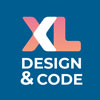
Web Design Portfolio: Showcasing Our Creative Work
A web design portfolio serves as a visual testament to the skills, creativity, and expertise of a web design agency or individual designer. It offers potential clients a glimpse into past projects, providing insight into the design style, functionality, and overall quality of work. In this article, we’ll delve into the importance of a web design portfolio and explore how it can effectively showcase creative work.
The Significance of a Web Design Portfolio
For web designers and agencies, a portfolio is more than just a collection of past projects – it’s a powerful marketing tool that can help attract new clients and showcase capabilities. Here are several reasons why a web design portfolio is essential:
- Visual Representation: A portfolio visually represents a designer’s or agency’s body of work, allowing potential clients to see examples of completed projects.
- Evidence of Expertise: It provides tangible evidence of expertise, demonstrating proficiency in various design styles, techniques, and technologies.
- Building Trust: A well-curated portfolio builds trust with potential clients by showcasing successful projects and client testimonials, instilling confidence in the designer’s abilities.
- Inspiration and Ideas: For prospective clients, a portfolio serves as a source of inspiration and ideas, offering insights into design trends, user experiences, and creative solutions.
- Evaluation Tool: Clients can use a portfolio to evaluate whether a designer’s style and approach align with their vision and project requirements, aiding in the decision-making process.
Effective Portfolio Showcase
An effective web design portfolio should be well-organized, visually engaging, and easy to navigate. Here are some key considerations for showcasing creative work:
- Selection of Projects: Choose a diverse range of projects that highlight different design styles, industries, and functionalities to demonstrate versatility.
- High-Quality Images: Use high-resolution images and screenshots to showcase design details and visual elements effectively.
- Project Descriptions: Provide concise yet informative descriptions for each project, outlining the client’s goals, design process, and outcomes achieved.
- Client Testimonials: Incorporate client testimonials or case studies to add credibility and demonstrate client satisfaction with the delivered work.
- Clear Contact Information: Make it easy for potential clients to reach out by including clear contact information or a call-to-action prompting them to get in touch.
Get Inspired
Whether you’re a seasoned web designer or a business owner in need of web design services, exploring web design portfolios can provide inspiration and insights into industry trends and best practices. Take the time to browse through portfolios, analyze design approaches, and identify elements that resonate with your vision.
Remember, a well-crafted web design portfolio is not only a showcase of past accomplishments but also a reflection of creativity, professionalism, and dedication to excellence in web design.
